A data warehouse is used for reporting and data analysis, and is considered a core component of business intelligence. Data warehouses are central repositories of integrated data from one or more disparate sources. It eases the analysis and reporting processes of an organization and helps the business make better decisions with clearer forecasts.
A data mart is a subset of the data warehouse and is usually oriented to a specific business line or department. Whereas data warehouses have an enterprise-wide depth, data marts are small in size and flexible.
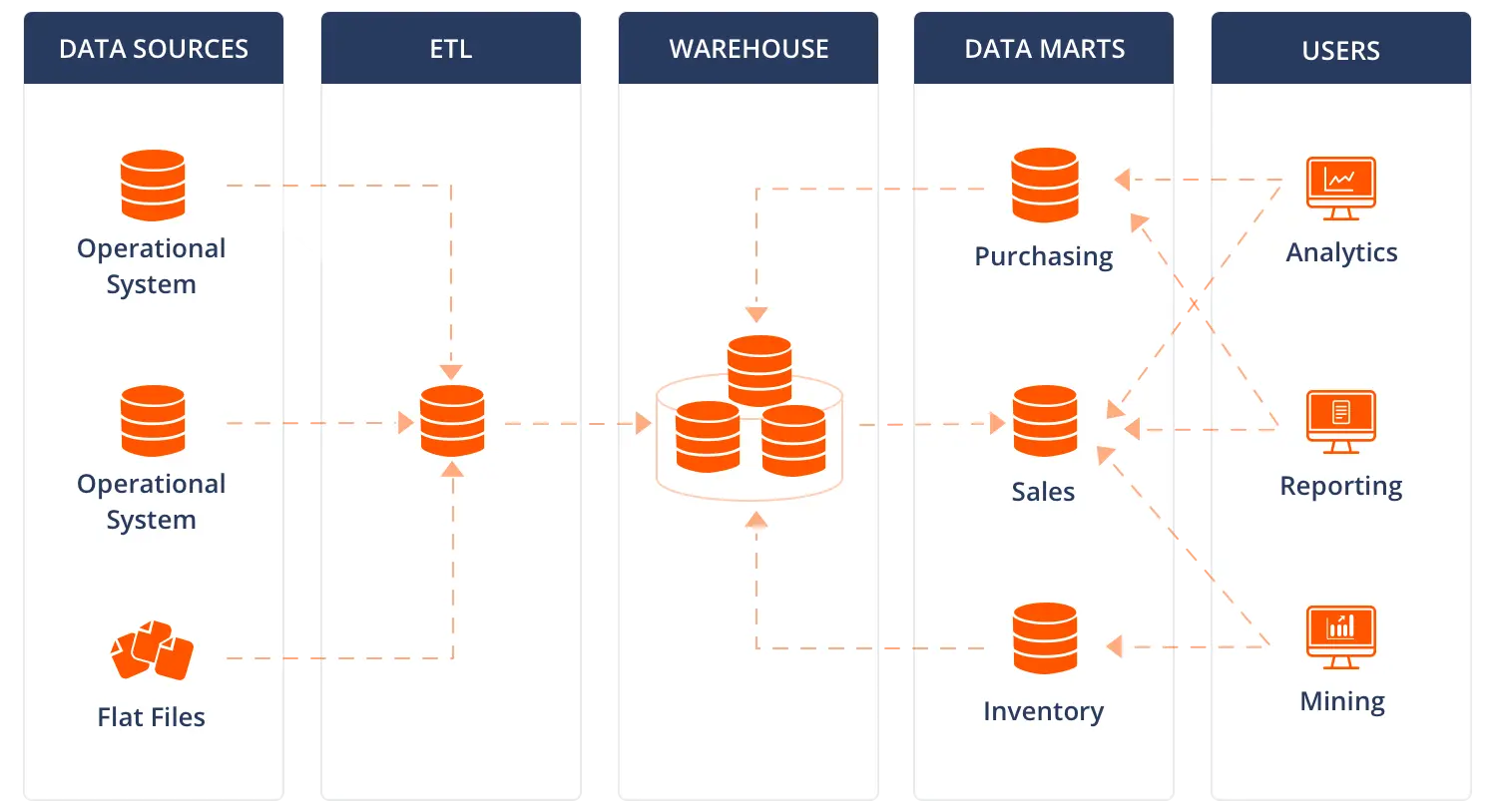
When do we use a data warehouse?
Is your organization data-driven and you need to collect data from different sources? That’s when you need a data warehouse as a central repository to store your organization’s relevant data.
When do we use a data mart?
If you need to collect data from only a few sources and are focusing on a single department within an organization, you need a data mart.
Data warehouse versus data mart
Both data warehouses and data marts are used to store data. The main difference between them is that data warehouses are data-oriented in nature and used for purposes of wider scope. Data marts are project-oriented in nature and used in situations of limited scope.
Data warehouse and data mart integrations supported in Bold BI
- Amazon Aurora
- Amazon Redshift (live connection)
- Azure Synapse Analytics (formerly Azure SQL Data Warehouse) (live connection)
- Google BigQuery (live connection)
- Google Cloud
- MariaDB
- MemSQL
- Microsoft SQL Server
- MongoDB
- MySQL
- Oracle
- PostgreSQL
- Presto (live connection)
- Snowflake (live connection)
Recommended Data Warehouse/Data Mart solution for Bold BI
| Enterprise | Cloud | |
| ETL tool | Syncfusion Data Integration Platform | Microsoft Azure Data Factory |
| Data Warehouse | Microsoft SQL Server | Azure Synapse Analytics (formerly Azure SQL Data Warehouse) |
| Data Mart | Microsoft SQL Server | Azure SQL Server |
| Business Intelligence Tool | Bold BI Enterprise | Bold BI Cloud |
How to connect Bold BI with a data warehouse
You can easily connect with most common data warehouse and data mart data sources in Bold BI®. Let’s see an example of how to connect Azure Synapse Analytics with the Bold BI application.
First, connect to the Bold BI Azure Synapse Analytics using the Azure Synapse Analytics connector. It fetches the data from the data warehouse server by executing the query every time, and the dashboard shows the latest metrics in real time.
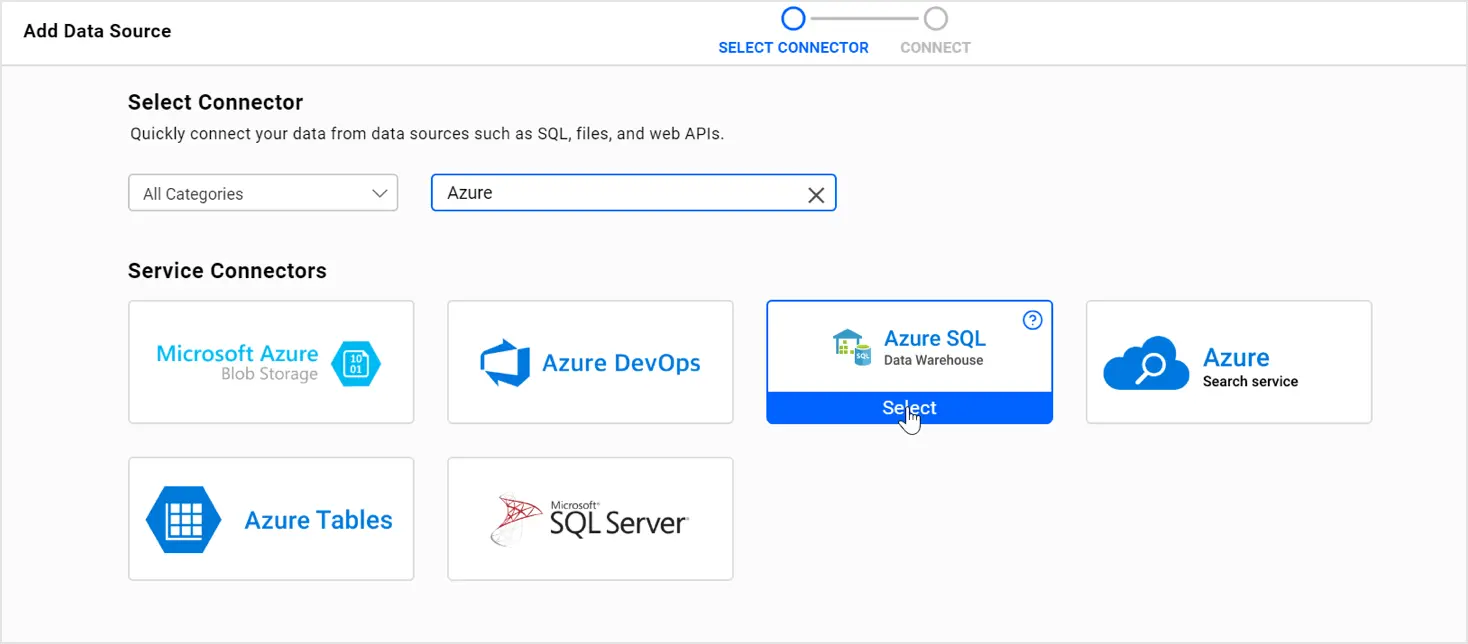
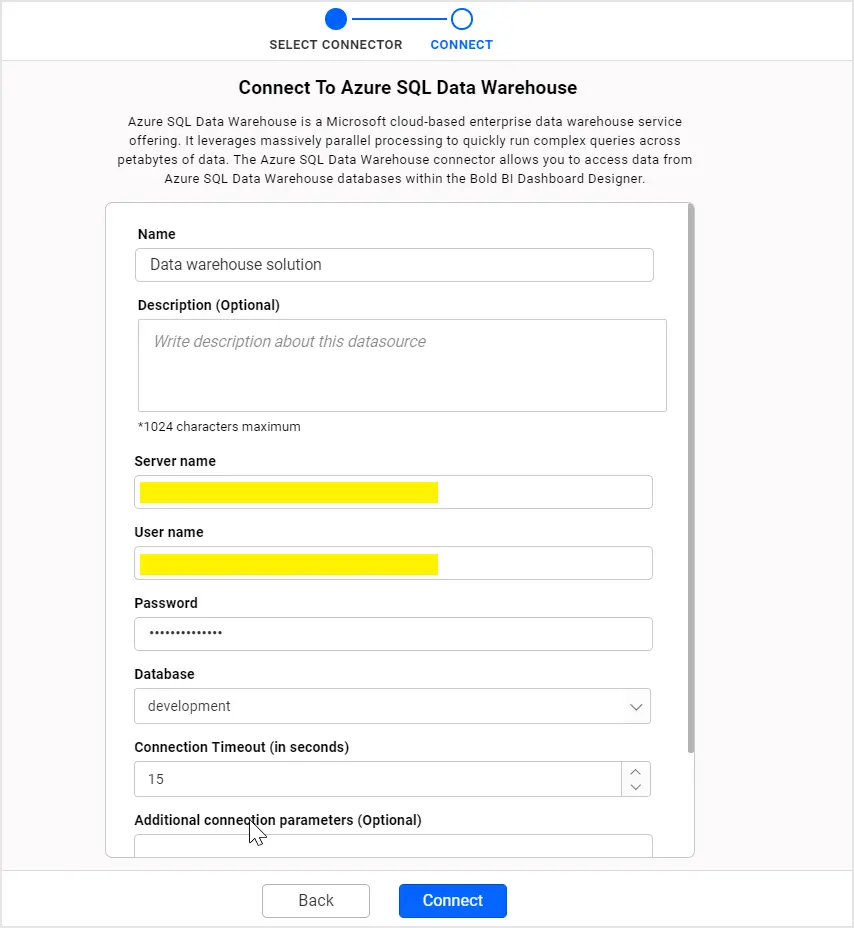
Once you’ve connected to the Azure Synapse Analytics data source, a predefined list of tables and views will be displayed. Drag the required tables or views to the canvas and save the data source.
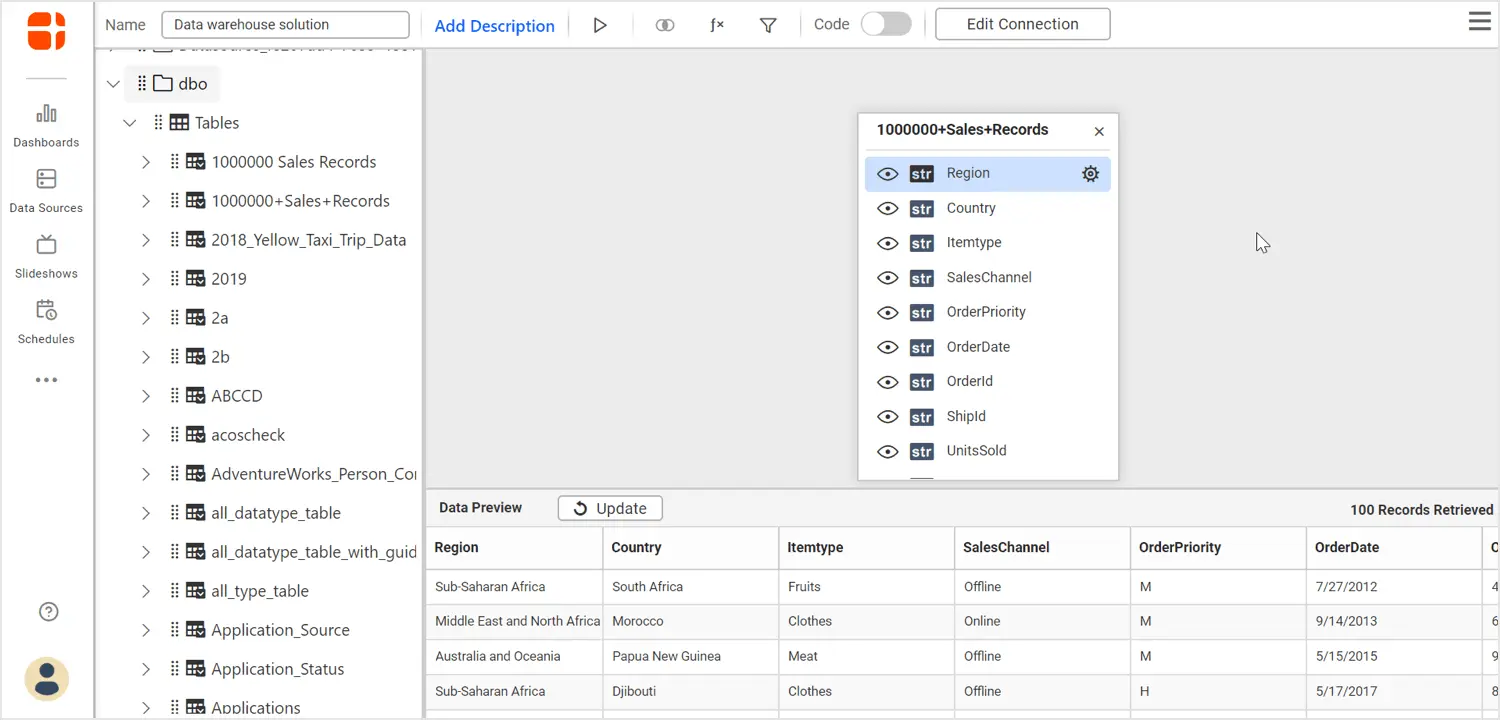
Now you are all set to create a dashboard. Check out the How to Create a Dashboard video tutorial to get started with dashboard creation.
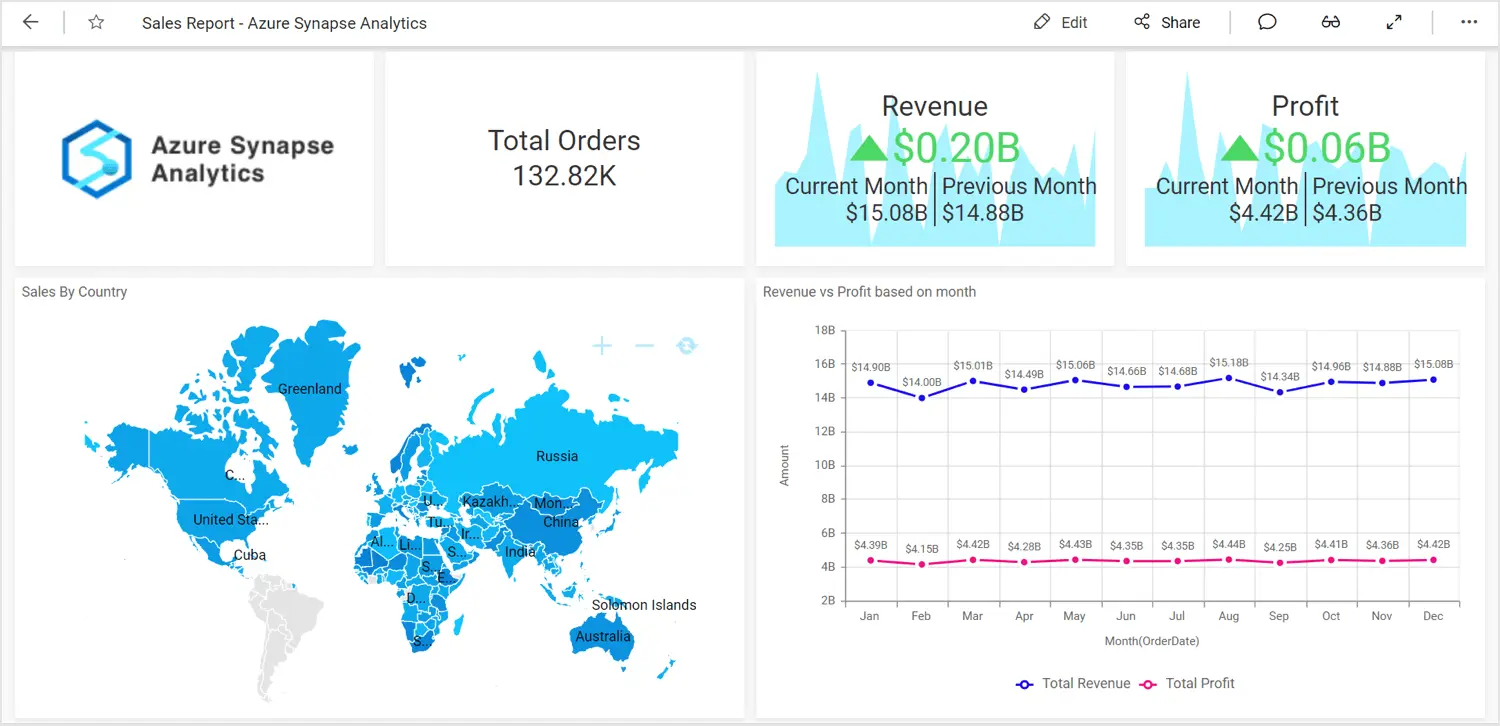
Bold BI –
Start Embedding Powerful Analytics
Try out all the features of Bold BI with 30-day free trial.
Conclusion
In this blog, you have seen what data warehouses and data marts are and how they work with Bold BI®.
If you have any questions on this blog, please feel free to post them in the following comment section. Get started with Bold BI by signing up for a free trial and create more interactive business intelligence dashboards. You can also contact us by submitting your questions through the Bold BI website or, if you already have an account, you can log in to submit your support question.



















